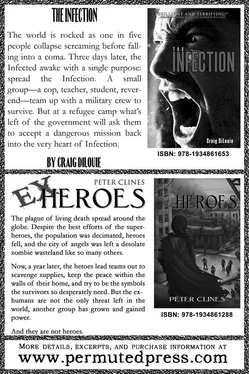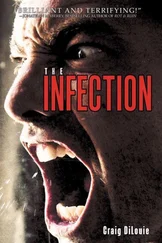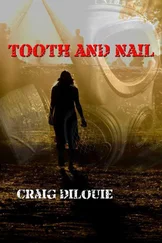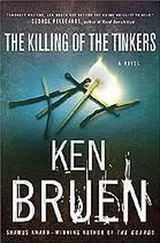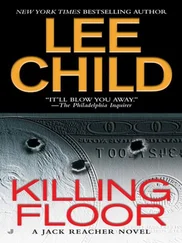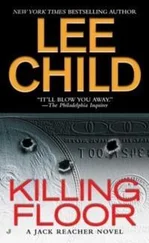The small VDT screen mounted next to the driver shows a digital map of the southeastern quadrant of Arlington, Virginia. Blue icons reveal friendly forces, so massively concentrated at the airport, now a forward operations base, that it is hard to pick out their column of LAV IIIs turning north onto Crystal Drive. There are no red icons. It is assumed the enemy is everywhere, dispersed in small formations.
In neat white letters on the back of his green helmet, the driver has stenciled, how’s my driving? call M2-BOOM. The Stryker commander stands on a platform with the upper half of his body outside the vehicle so he can operate the fifty-caliber machine gun.
Rod scans the anxious faces of the eight beefy kids sitting with him in the hot interior of the vehicle. They look formidable enough. His squad of shooters is armed to the teeth, highly trained, part of a military that once projected American power almost everywhere on the planet. Modern legionnaires, lean and fit and hungry. He wonders if they will have what it takes to shoot and kill American civilians. Not just some, but hundreds, even thousands.
More specifically, they will be battling monsters. How do you train for that? Rod had been forced to sit through endless PowerPoint presentations discussing the type of monsters encountered and known capabilities and weaknesses. Few traditional tactics apply. The enemy knows no fear. Flanking accomplishes nothing. Ground cover is not important anymore, just concealment. Flamethrowers, which fell out of military use in 1978, are starting to be manufactured again in fortified factories. Shotguns and pistols are in high demand. The bayonet is making a comeback. Some soldiers are being trained as mules —lightly armed troops solely responsible for carrying spare ammunition.
Everything is changing. They must unlearn everything they know, then relearn it fast or die.
As the soldiers notice Rod’s attention, they look away. The whine of the rig’s Caterpillar diesel engine fills the dim passenger compartment.
It’s going to take time to earn their trust. They can hate him for what they think he did. That is fine. But they must believe he is competent, and follow his orders, or he cannot lead.
Most of the boys in Fifth Stryker Cavalry Regiment’s Company C are orphans from other outfits. Rod and Lieutenant Pierce, assigned to Comanche’s Second Platoon, the Hellraisers, are the sole survivors of Battle Company’s Third Platoon. Rod is new to the Hellraisers and some of these soldiers are new to each other, the result of higher command consolidating understrength units on the fly after the catastrophic losses the regiment took in Germany during the first days of the epidemic. The regiment had flown to Ramstein Air Base as a pit stop on their way home after a violent year in Afghanistan. Then the Screaming struck down one out of every five of them.
Three days later, the screamers rose from their beds.
Many soldiers could not fire on their comrades. They tried everything to subdue them without using lethal force. They wrestled and clubbed them and shot at their legs and gradually became infected themselves. Rod knows soldiers ultimately fight and die for the guy next to them. Why else would they do it? Death is final, and it is eternal. Looking death in the eye, country and apple pie and bringing democracy to the Middle East don’t seem as important as they did at the enlistment office. So they do it for the other guys in their foxhole. It is a brotherhood bred not from the rigors of war, but from facing death together—a will to survive demanding mutual support and sacrifice.
The Infected left their beds and attacked their comrades.
Many of the soldiers could not shoot.
Rod’s old squad had revered him back in Kandahar, calling him Cool Rod for his icy calm in a fight. But when his boys came running at him, he had not been able to shoot them. The entire platoon had been infected, along with a number of support personnel, and they ran at him and the Lieutenant in a wave. The young officer shot them down, killing thirty-one uniformed men and women, a heroic act in a battle where heroes eventually became despised. The Infected could not be subdued. They had to be killed. It was a horrible necessity, and anyone who pulled the trigger had blood on their hands. These boys see him as a monster.
Rod claimed the kills and Pierce did not contradict him. Pierce thought Rod was protecting him, but he was really protecting himself. If he admitted he froze, he could no longer lead men into battle. He would rather his new squad see him as a devil than a coward.
The boys glance at Rod with distrust, wondering if he would sacrifice them, if they got infected, as readily as he did his entire platoon.
Devil or coward. Soon he will be confirmed as one or the other. Because the Hellraisers are going to shoot American civilians today, and he will be asked to pull the trigger.
♦
Rod opens the hatch over his head and takes a look outside. The Stryker column snakes along the road at a reserved thirty miles an hour. They are in no hurry. Ten feet both high and wide and nearly twenty-five feet long, the squat metal titans look like ungainly boats on eight giant rubber wheels. Most are still clad in cages of slat armor to protect them against rocket-propelled grenades and piled with gear, making them look like something from The Road Warrior . The commander of the next vehicle in line grins at Rod under his Ray-Bans and spreads his arms as if to say, Look at all this. Can you believe this shit?
The combat engineers spent two days clearing a twelve-foot-wide path through what was a bumper-to-bumper traffic jam of abandoned cars and trucks choking Crystal Drive all the way to their objective. Judging from the scattered luggage, these folks were probably trying to get to the airport, which had already been shut down. The vehicles, stripped of gas and useful parts, are now piled along the sides of the road awaiting towing. It is like driving through a junkyard. Rod scans the wreckage for improvised explosives out of habit. Bodies are entombed in some of the cars. Loose trash floats and rustles on the breeze.
The plaintive notes of a religious song fall on his ears from one of the lead vehicles. It’s “Ave Maria,” Rod realizes with a frown. Christ, what a downer. And yet it fits.
Ave Maria, gratia plena.
Hail Mary, full of grace. Roger that.
The Strykers ahead disappear into a wall of black smoke billowing from a distant hill of burning corpses, and Rod follows, emerging coughing on the other side. The entire city is shrouded in haze, ashes of torched people floating on currents of hot air. An automatic cannon booms in the distance, drowning out the crackle of small arms fire that is so omnipresent it is only noticeable when it stops. Fighter jets roar through the distant murk, barely visible in this false twilight at nine hundred hours. One of the fighters breaks formation, veering toward the earth like a bird of prey to fire a missile at a target on the ground. Light flashes on the horizon. BOOM.
The battle for the capital is in full swing.
On his right, C130 cargo planes drop from the sky in a steady stream of screaming metal and disappear behind Terminal B of the airport, where they will land and disgorge even more troops and equipment. Rod’s regiment has been bivouacked in Terminal A for the past few days, one of the first units to arrive, and it is already getting crowded. The troops swarmed Washington’s key facilities and most defendable and sparsely populated patches of ground—Reagan Airport, East Potomac Park, Theodore Roosevelt Island. The engineers began the herculean task of clearing the major arteries. This beachhead secure, the invasion force now needs to expand to make room for more troops as well as civilian refugees starting to trickle in.
Читать дальше
